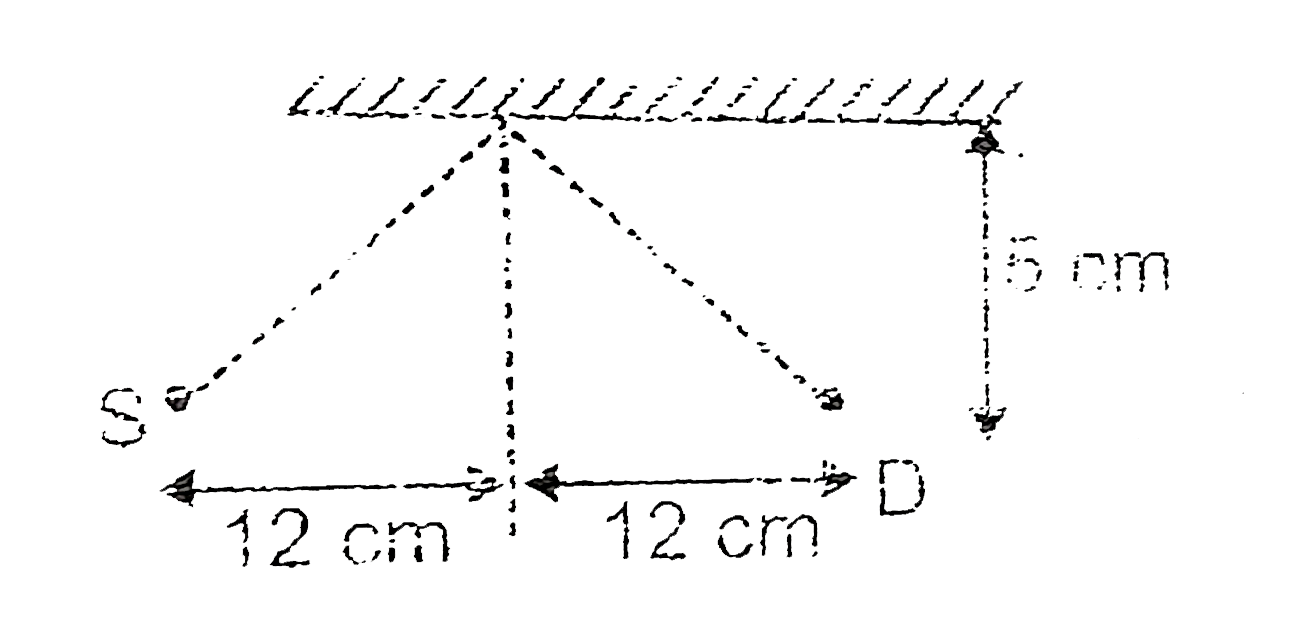What is the phase difference between the displacement wave and pressure wave in sound wave :-
Zero
The correct Answer is:B
To find the phase difference between the displacement wave and the pressure wave in sound waves, we can follow these steps:
Step 1: Understand the displacement wave equation
The displacement of particles in a sound wave can be described by the equation:
s=s0sin(ωt−kx)
where:
- s is the displacement,
- s0 is the amplitude of displacement,
- ω is the angular frequency,
- k is the wave number,
- t is time,
- x is the position.
Step 2: Understand the pressure wave equation
In a sound wave, pressure varies with time and position. The pressure wave can be expressed as:
Δp=Δp0cos(ωt−kx)
where:
- Δp is the pressure variation,
- Δp0 is the amplitude of pressure variation.
Step 3: Relate the pressure wave to the displacement wave
The pressure wave can be rewritten in terms of sine function:
Δp=Δp0sin(ωt−kx+π2)
This transformation shows that the pressure wave is a sine wave that is phase-shifted by π2 radians (or 90 degrees) compared to the displacement wave.
Step 4: Determine the phase difference
The phase difference Δϕ between the displacement wave and the pressure wave can be calculated as:
Δϕ=π2
This indicates that the pressure wave reaches its maximum value a quarter cycle (90 degrees) after the displacement wave.
Conclusion
Thus, the phase difference between the displacement wave and the pressure wave in sound waves is:
Δϕ=π2
Final Answer
The phase difference is π2 radians.
---
The displacement of particles in a sound wave can be described by the equation:
s=s0sin(ωt−kx)
where:
- s is the displacement,
- s0 is the amplitude of displacement,
- ω is the angular frequency,
- k is the wave number,
- t is time,
- x is the position.
In a sound wave, pressure varies with time and position. The pressure wave can be expressed as:
Δp=Δp0cos(ωt−kx)
where:
- Δp is the pressure variation,
- Δp0 is the amplitude of pressure variation.
The pressure wave can be rewritten in terms of sine function:
Δp=Δp0sin(ωt−kx+π2)
This transformation shows that the pressure wave is a sine wave that is phase-shifted by π2 radians (or 90 degrees) compared to the displacement wave.
The phase difference Δϕ between the displacement wave and the pressure wave can be calculated as:
Δϕ=π2
This indicates that the pressure wave reaches its maximum value a quarter cycle (90 degrees) after the displacement wave.
Thus, the phase difference between the displacement wave and the pressure wave in sound waves is:
Δϕ=π2
The phase difference is π2 radians.
Topper's Solved these Questions
- RACEBOOK - ALLENCHAPTER - RACEEXERCISE - Basic Maths (Wave Motion & Dopplers Effect) (Superposition of waves interfarence, beats)
15 Videos
- NEWTONS LAWS OF MOTIONBOOK - ALLENCHAPTER - NEWTONS LAWS OF MOTIONEXERCISE - EXERCISE-III
28 Videos
- SIMPLE HARMONIC MOTIONBOOK - ALLENCHAPTER - SIMPLE HARMONIC MOTIONEXERCISE - Example
1 Videos
Similar Questions
What is the phase difference between the incident wave and the reflected wave in the following ?
1. Wave reflected from rigid boundary.
2. Wave reflected from free boundary.
View SolutionAt the open end of organ pipe
View SolutionWhen a sound wave is reflected from a wall the phase difference between the reflected and incident pressure wave is:
View SolutionWhen a sound wave is reflected from a wall the phase difference between the reflected and incident pressure wave is:
View SolutionWhat is the difference between a sound wave and a T. V. wave ?
View SolutionAnswer the question briefly and the point:
What is the phase difference between a node and its nearest antinode in a stationary wave?
View SolutionA wave of frequency 500Hz has a wave velocity of 350m/s.
(a) Find the distance between two points which are 60∘ out of phase.
(b) Find the phase difference between two displacement at a certain point at time 10−3s apart.
View SolutionA wave of frequency 500Hz has a wave velocity of 350m/s.
(a) Find the distance between two points which are 60∘ out of phase.
(b) Find the phase difference between two displacement at a certain point at time 10−3s apart.
View SolutionA sound source, detector and a cardboard are arranged as shown in figure. The wave is reflected from the cardboard at the line symmetry of source edetector. Initially the path difference between the reflected wave and the direct wave is one third of the wavelength of sound. Find the minimum distance by which the cardboard should be moved upwards so that both waves are in phase.

View SolutionState two differences between light and sound waves.
View Solution
